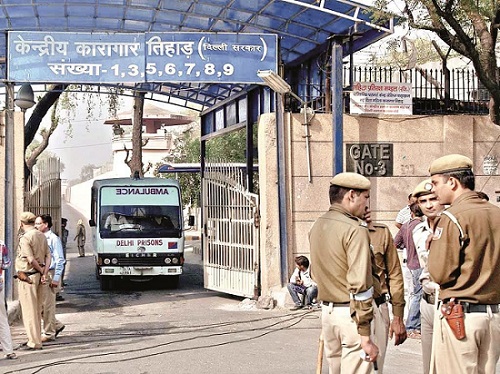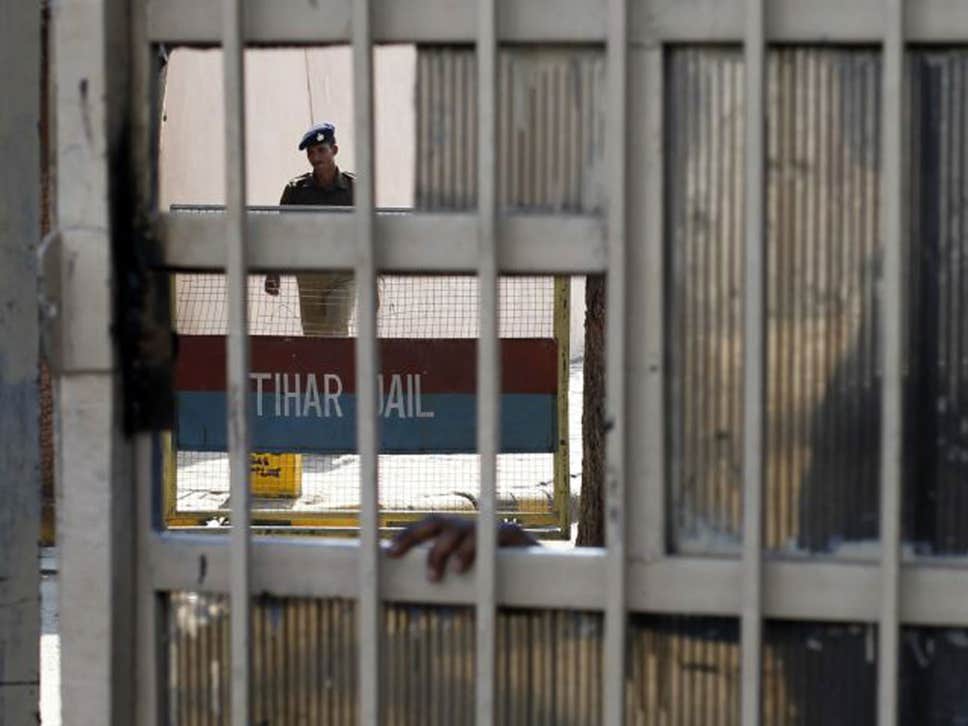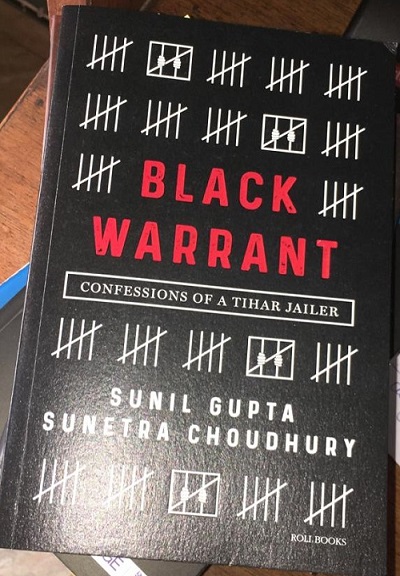There are 17,000 inmates in Tihar Jail, many say its actual space is for just 6,000 inmates. I still haven’t figured out why it is called the Maximum Security Prison. I once covered the trial of alleged assassins of PM Indira Gandhi, Tihar Jail – South Asia’s largest prison – then looked like a correctional facility with barbed-wire fences, guard stations and cells scattered across 400 acres of land.
Tihar figured in the headlines every now and then, it still does. But there was no classy documentation, no brilliant lines about life and death behind those huge, concrete walls. I had no idea whether the warden would share –like in the US — his handset number to every prisoner on release. I knew very little about Tihar.
Roli Books latest, Black Warrant, offers a virtual walk the talk from inside Tihar, narrated by its former jailor Sunil Gupta and chronicled brilliantly by seasoned journalist Sunetra Choudhury, currently political editor of Hindustan Times newspaper. There is so much information that it becomes difficult to dissect it for an effective analysis. Black Warrant grows on you, its like travelling in a lift to the Eiffel Tower, the best view is reserved only when you reach the top. I found the best chapters towards the end: It had Manu Sharma, Subrata Roy and Jaswinder Singh Jassa, the King Cobra of Tihar. It was gripping.
Choudhury, who had an immaculate style when she anchored shows for NDTV, has managed to get almost anything and everything out of Gupta, and the two blended well to get both the news and the juice out of that prison. It’s not very easy because very few jailor open up as Gupta did, in one case he explains in detail about his dust up with Roy of the Sahara Group, considered among the top influencers in India. Gupta complained to Delhi CM Arvind Kejriwal who sought proof and – I have a feeling – the matter rested there without any more fireworks.
Gupta makes it clear that he wanted to push in a host of changes in Tihar and did not like the way some of the high profile prisoners like Charles Shobraj were throwing their weight around. And he knew he had to cut through many, many red tapes to achieve the near impossible. It’s clear from the book that Tihar blew hot, blew cold every now and then. It was not exactly a cold, harsh American prison, nor it was a Norwegian prison home that has the world’s best correctional systems in place. That Gupta liked prisoners who worked overtime to improve systems of Tihar is clear because he mentions how Manu Sharma, who killed Jessica Lall, worked overtime and helped Tihar earn some decent cash through new models of business. But hold it, Gupta also says he did not like the way Manu Sharma conducted himself inside the prison, often ordering food from expensive hotel outside Tihar and running a private durbar inside the prison.
Chowdhury and Gupta talk in detail about the Nirbhaya case and the way the accused were housed in Tihar, and the way they conducted themselves and the way they were treated by others, it was a fascinating read. So was the chapter on the assassins of Indira Gandhi. Black Warrant brilliantly chronicles life inside Tihar, tucked in a crowded West Delhi neighbourhood synonymous with huge crowds, backfiring trucks and belching lorries. The book also tells you moments of death when prisoners are taken to the gallows. Afzal Guru, a top political convict, sang a Bollywood song, assassins of Indira Gandhi shouted religious slogans, some just collapsed. Death is not just a five letter word, it means everything to those in the condemned cells. The condemned cells are a little far away from the ones which housed inmates convicted of lesser violent crimes. The condemned cells are eerily quiet — death is plastered all over the walls and there are no huge sounds of slamming metal doors or shouting inmates.

The book details the life and times of Shobraj, the notorious bikini killer now lodged in a prison in Kathmandu. And the incident leading to the rape and murder of Geeta and Sanjay Chopra by Billa and Ranga. The Chopra story had – for all practical purposes – dropped from my storyboard but Shobraj was a fascinating read. I tried tracking him a year or two ago in Nepal and even managed a brief conversation with him through a handset owned by his mother-in-law. I was amazed to hear that the serial killer – who once proudly claimed he could smuggle even an elephant in Nepal – was now a pale self of his flashy life. Even if he completes his sentence in Nepal, the Thai cops will be seeking his custody.
The book — actually — gets inside the minds of prisoners and explains how they miss the openness of light, the effect of fresh air coming through. The writers make a genuine effort to explain the strange, love-hate relationships between officers and inmates. Gupta worked hard in Tihar. For him it was not an ordinary job, he had to understand the life of the inmates within the walls, and what he could do to shape their lives once released. Choudhury, as a seasoned historian of crime and punishment inside Indian prisons, chronicled the events perfectly. The jugalbandi is a brilliant read, I would recommend it to be used as a standard tool in all journalism schools in India.


